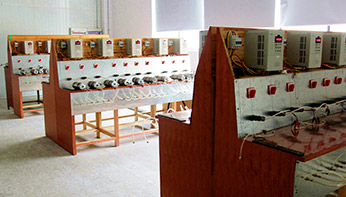Revolutionizing Machining: The Water-Cooled Router Spindle
 Jul 22, 2024|
Jul 22, 2024| View:64
View:64I. Introduction to Water-Cooled Router Spindles
II. How Water-Cooled Router Spindles Work
Heat Dissipation: The water absorbs heat from the spindle, maintaining a stable operating temperature.
Closed-Loop System: The water is continuously circulated and cooled, ensuring a constant cooling effect.
Coolant Recovery: The system is designed to minimize coolant loss, making it environmentally friendly.
III. Benefits of Water-Cooled Router Spindles
Enhanced Performance: By maintaining a stable temperature, the spindle operates more efficiently, leading to better machining accuracy.
Extended Tool Life: Reduced heat means less wear and tear on cutting tools, prolonging their lifespan.
Improved Safety: The risk of overheating and potential damage to the machine or workpiece is significantly reduced.
Eco-Friendly: Water is a more sustainable cooling medium compared to air, contributing to greener manufacturing processes.
IV. Applications of Water-Cooled Router Spindles
Woodworking: Used in CNC routers for cutting, carving, and engraving wood with high precision.
Metalworking: Employed in machines that perform high-speed metal cutting, such as milling and drilling.
Medical and Dental: Utilized in precision instruments where temperature control is crucial for accuracy.
Aerospace: Applied in the machining of complex aerospace components that require stringent tolerances.
V. Technical Specifications and Considerations
Spindle Speed: The maximum rotational speed the spindle can achieve, often measured in RPM (Revolutions Per Minute).
Power Rating: The spindle's power output, which determines the cutting capacity.
Cooling System: The efficiency and capacity of the water cooling system, including the flow rate and pressure.
Compatibility: Ensuring the spindle is compatible with the machine tool and the type of work being performed.
VI. Market Trends and Developments
Demand Growth: There is a growing demand for water-cooled router spindles in industries where precision and efficiency are critical.
Technological Advancements: Ongoing research is leading to new designs and materials that enhance the performance and durability of these spindles.
Regulatory Compliance: As environmental concerns rise, there is an increasing focus on the development of energy-efficient and eco-friendly cooling systems.
VII. Challenges and Solutions
Initial Cost: Water-cooled systems can be more expensive to install and maintain compared to air cooling.
Maintenance Requirements: Regular maintenance is necessary to prevent issues such as blockages or leaks in the cooling system.
Training and Knowledge: Operators and technicians need to be trained on the proper use and care of water-cooled spindles.









